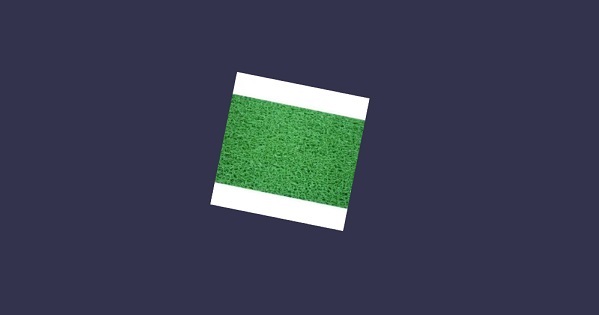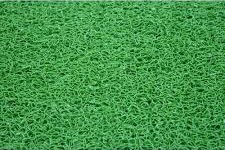BabylonJS - ShaderMaterial
着色器材质为您提供材质作为输出。您可以将此材质应用于任何网格。它基本上将场景中的数据传递到顶点和片段着色器。
要获取着色器材质,请调用以下类 −
var myShaderMaterial = new BABYLON.ShaderMaterial(name, scene, route, options);
参数
考虑与着色器材质相关的以下参数 −
name − 一个字符串,命名着色器。
scene −着色器将要使用的场景。
Route − 以三种方式之一路由到着色器代码 −
object - {
vertex: "custom",
fragment: "custom"
}, used with
BABYLON.Effect.ShadersStore["customVertexShader"] and
BABYLON.Effect.ShadersStore["customFragmentShader"]
object - {
vertexElement: "vertexShaderCode",
fragmentElement: "fragmentShaderCode"
},
used with shader code in <script> tags
string - "./COMMON_NAME",
最后提到的语法与 index.html 文件夹中的外部文件 COMMON_NAME.vertex.fx 和 COMMON_NAME.fragment.fx 一起使用。
Options − 对象包含属性和 uniforms 数组,其中包含其名称作为字符串。
带有值的着色器语法如下所示 −
var shaderMaterial = new BABYLON.ShaderMaterial("shader", scene, {
vertex: "custom",
fragment: "custom",
},
{
attributes: ["position", "normal", "uv"],
uniforms: ["world", "worldView", "worldViewProjection", "view", "projection"]
});
属性必须为数组形式。这些属性包含 position、normal 和 uv,它们是 vector3 3D 浮点向量。
vec2 − 一个二维浮点数向量。
vec3 − 一个三维浮点数向量。
mat4 − 一个具有 4 列和 4 行浮点数的矩阵。
gl_Position − 它为屏幕坐标提供位置数据。
gl_FragColor −它为屏幕上面的表示提供颜色数据。
以上内容是 GLSL 语言中的内置变量。
由于顶点位置需要尽可能准确,因此应将所有浮点数设置为具有高精度。这是在每个着色器的代码开头使用 - precision highp float 完成的。precision highp float 决定浮点数使用的精度。
以下演示基于第一个对象方法。
演示
<!doctype html>
<html>
<head>
<meta charset = "utf-8">
<title>BabylonJs - Basic Element-Creating Scene</title>
<script src = "babylon.js"></script>
<style>
canvas {width: 100%; height: 100%;}
</style>
</head>
<body>
<canvas id = "renderCanvas"></canvas>
<script type = "text/javascript">
//downloaded HDR files from :http://www.hdrlabs.com/sibl/archive.html
var canvas = document.getElementById("renderCanvas");
var engine = new BABYLON.Engine(canvas, true);
var createScene = function() {
var scene = new BABYLON.Scene(engine);
var camera = new BABYLON.ArcRotateCamera(
"Camera", Math.PI / 4, Math.PI / 4, 4, BABYLON.Vector3.Zero(), scene);
camera.attachControl(canvas, true);
var light = new BABYLON.HemisphericLight("light1", new BABYLON.Vector3(0, 1, 0), scene);
BABYLON.Effect.ShadersStore["customVertexShader"] = "
" +
"precision highp float;
" +
"// Attributes
" +
"attribute vec3 position;
" +
"attribute vec2 uv;
" +
"// Uniforms
" +
"uniform mat4 worldViewProjection;
" +
"// Varying
" +
"varying vec2 vUV;
" +
"void main(void) {
" +
"gl_Position = worldViewProjection * vec4(position, 1.0);
" +
"vUV = uv;
"+"
}
";
BABYLON.Effect.ShadersStore["customFragmentShader"] = "
"+
"precision highp float;
" +
"varying vec2 vUV;
" +
"uniform sampler2D textureSampler;
" +
"void main(void) {
"+
"gl_FragColor = texture2D(textureSampler, vUV);
"+"
}
";
var shaderMaterial = new BABYLON.ShaderMaterial("shader", scene, {
vertex: "custom",
fragment: "custom",
},
{
attributes: ["position", "normal", "uv"],
uniforms: ["world", "worldView", "worldViewProjection", "view", "projection"]
});
var mainTexture = new BABYLON.Texture("images/mat.jpg", scene);
shaderMaterial.setTexture("textureSampler", mainTexture);
shaderMaterial.backFaceCulling = false;
var box = BABYLON.MeshBuilder.CreateBox("box", {}, scene);
box.material = shaderMaterial;
return scene;
};
var scene = createScene();
engine.runRenderLoop(function() {
scene.render();
});
</script>
</body>
</html>
输出
上述代码行将生成以下输出 −

在此演示中,我们使用了图像 mat.jpg。图像存储在本地的 images/ 文件夹中,也粘贴在下面以供参考。您可以下载您选择的任何图像并在演示链接中使用。
Images/mat.jpg



